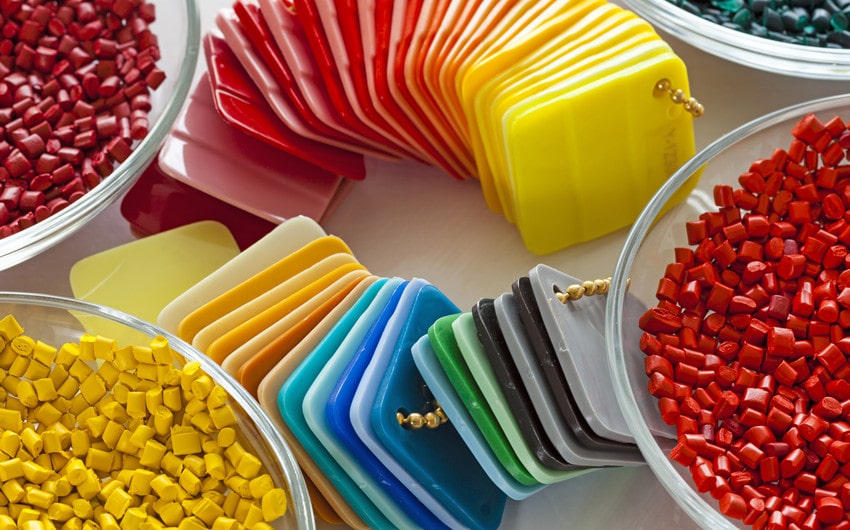Plastic, the ubiquitous material of the modern age, has played a pivotal role in shaping the world we live in today. From the smallest gadgets to large industrial machinery, plastic materials have found a place in virtually every sector.
Yet, where did it all begin? How has it evolved over the years? This article delves into the fascinating journey of plastics from their conception to modern applications.
A Humble Beginning
The story of plastics can be traced back to the mid-19th century. The Industrial Revolution was in full swing, and there was a growing demand for materials that were malleable, durable, and economical. Natural rubber was an option, but was expensive and had limited availability. This challenge led to the quest for synthetic alternatives.
In 1862, Alexander Parkes unveiled ‘Parkesine’ at the Great International Exhibition in London. Made from cellulose treated with camphor, this material could be moulded and retain its shape upon cooling. Although ‘Parkesine’ was not commercially successful due to its high production cost, it paved the way for the development of the first synthetic plastic.
The Rise of Synthetic Plastics
By the early 20th century, the foundations for plastic materials as we know them were laid. Belgian-born Leo Hendrik Baekeland’s invention, Bakelite, in 1907, was a turning point.
Unlike its predecessors, Bakelite was fully synthetic, made from phenol and formaldehyde. It was heat-resistant, non-conductive, and could be moulded into various shapes, making it a popular choice for electrical insulations and, later, consumer goods.
Subsequently, multiple breakthroughs occurred. Polyvinyl chloride (PVC), polystyrene, and nylon were all introduced during the 1920s and 1930s. Each of these materials had distinct properties that catered to various industries. For instance, nylon replaced silk in stockings, heralding a new era of synthetic fibres.
Post-War Plastics Boom
The aftermath of World War II saw a surge in the demand for plastics. The material was cheap, versatile, and, most importantly, available in abundance. During the war, research and development in plastics had intensified to cater to military needs, resulting in innovations like acrylic (Plexiglass) and polyethene.
In the 1950s and 1960s, the consumer market began to recognise the potential of plastics. Everything from toys and kitchenware to furniture started being made from plastic. Simply Plastics, among other companies, highlighted the material’s versatility and adaptability, becoming a household name in plastic product manufacturing.
Innovation and Specialisation
The late 20th and early 21st centuries saw a significant shift towards specialisation in plastic materials. Polymers were now being designed to meet specific needs.
Thermoplastics, such as polyethene terephthalate (PET), became the go-to choice for beverage packaging. Polycarbonate, known for its strength and clarity, was employed in eyewear lenses and DVDs.
Bioplastics, derived from renewable sources like corn starch and sugarcane, emerged as sustainable alternatives to petroleum-based plastics. These innovations have allowed for a broader application range, from lightweight car components to medical implants.
Contemporary Concerns and Innovations
However, the ubiquity of plastic has also led to environmental concerns. The durability and longevity of plastics, which once made them attractive, are now causing ecological issues. Non-biodegradable plastics accumulate in the environment, leading to significant pollution, particularly in oceans.
In response, there’s been a renewed focus on developing biodegradable and recyclable plastics. The modern era emphasises sustainable production, consumption, and disposal methods, giving rise to innovations such as ocean-degradable plastics and upcycled plastic products.
Future Trajectories
The evolution of plastic materials has been nothing short of phenomenal. From the early days of ‘Parkesine’ to the sophisticated polymers of the 21st century, plastics have continuously adapted to the world’s changing needs. Their future promises further innovation, driven by sustainability and technological advancements.
It is expected that the plastics of the future will be smarter, more responsive, and ecologically harmonious. With the ongoing research in nanotechnology, molecular engineering, and biotechnology, the next chapter in the story of plastics promises to be as exciting as its inception.
In summary, plastics have come a long way from their modest beginnings. Their evolution reflects humanity’s ingenuity, adaptability, and ever-growing ambitions. While challenges remain, particularly concerning environmental sustainability, the story of plastics is a testament to the indomitable spirit of innovation and progress.

